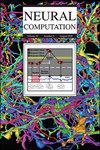回放作为大脑中穿越时间反向传播的基础。
IF 2.1
4区 计算机科学
Q3 COMPUTER SCIENCE, ARTIFICIAL INTELLIGENCE
引用次数: 0
摘要
情景记忆是如何在大脑中形成的,这一直是神经科学界的一个谜。对情景学习至关重要的大脑区域(如海马体)的特点是反复连接,并产生频繁的离线重播事件。重播事件的功能是一个积极争论的主题。计算模拟表明,当与适当的学习算法(如时间反向传播(BPTT))相结合时,循环连接可以实现序列学习。然而,BPTT在生物学上并不可信。我们首次在可逆循环神经网络R2N2中描述了一种生物学上合理的BPTT变体,该变体主要利用离线重播来支持情景学习。该模型使用向前和向后离线重放在两个循环神经网络(缓存和整合)之间传递信息,分别进行快速的一次性学习和统计学习。与标准BPTT中的重放不同,这种体系结构不需要人工的外部存储器存储。这种方法优于随机反馈本地在线学习和水库网络等现有解决方案。这也解释了海马体回放事件的功能意义。我们使用计算机科学的基准测试来证明R2N2网络的特性,并模拟啮齿动物的延迟交替t -迷宫任务。本文章由计算机程序翻译,如有差异,请以英文原文为准。
Replay as a Basis for Backpropagation Through Time in the Brain
How episodic memories are formed in the brain is a continuing puzzle for the neuroscience community. The brain areas that are critical for episodic learning (e.g., the hippocampus) are characterized by recurrent connectivity and generate frequent offline replay events. The function of the replay events is a subject of active debate. Recurrent connectivity, computational simulations show, enables sequence learning when combined with a suitable learning algorithm such as backpropagation through time (BPTT). BPTT, however, is not biologically plausible. We describe here, for the first time, a biologically plausible variant of BPTT in a reversible recurrent neural network, R2N2, that critically leverages offline replay to support episodic learning. The model uses forward and backward offline replay to transfer information between two recurrent neural networks, a cache and a consolidator, that perform rapid one-shot learning and statistical learning, respectively. Unlike replay in standard BPTT, this architecture requires no artificial external memory store. This approach outperforms existing solutions like random feedback local online learning and reservoir network. It also accounts for the functional significance of hippocampal replay events. We demonstrate the R2N2 network properties using benchmark tests from computer science and simulate the rodent delayed alternation T-maze task.
求助全文
通过发布文献求助,成功后即可免费获取论文全文。
去求助
来源期刊

Neural Computation
工程技术-计算机:人工智能
CiteScore
6.30
自引率
3.40%
发文量
83
审稿时长
3.0 months
期刊介绍:
Neural Computation is uniquely positioned at the crossroads between neuroscience and TMCS and welcomes the submission of original papers from all areas of TMCS, including: Advanced experimental design; Analysis of chemical sensor data; Connectomic reconstructions; Analysis of multielectrode and optical recordings; Genetic data for cell identity; Analysis of behavioral data; Multiscale models; Analysis of molecular mechanisms; Neuroinformatics; Analysis of brain imaging data; Neuromorphic engineering; Principles of neural coding, computation, circuit dynamics, and plasticity; Theories of brain function.
 求助内容:
求助内容: 应助结果提醒方式:
应助结果提醒方式:


